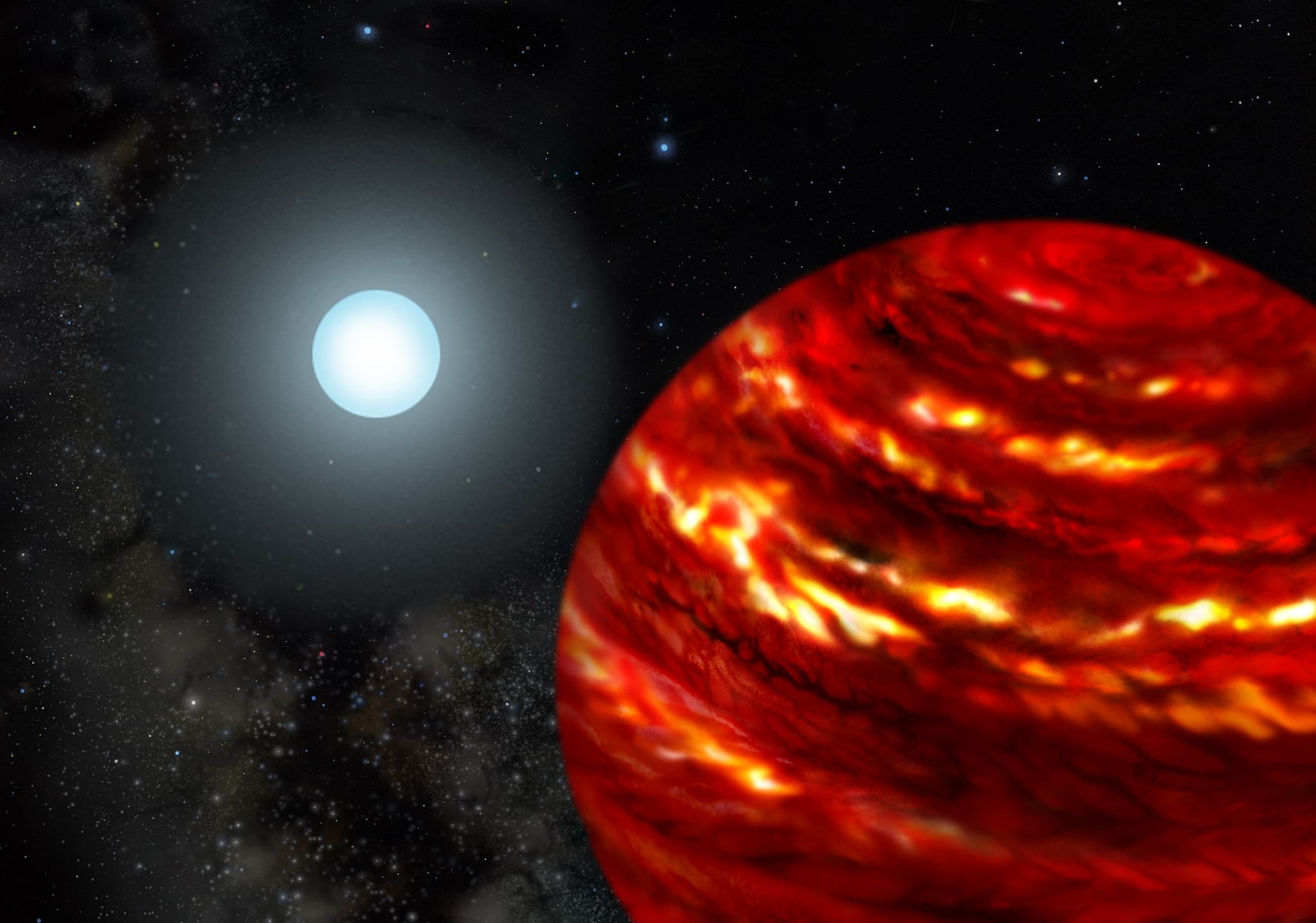Located about 129 light-years from Earth in the direction of the Pegasus constellation is the relatively young star system of HR 8799. Beginning in 2008, four orbiting exoplanets were discovered in this system which – alongside the exoplanet Formalhaut b – were the very first to be confirmed using the direct imaging technique. And over time, astronomers have come to believe that these four planets are in resonance with each other.
In this case, the four planets orbit their star with a 1:2:4:8 resonance, meaning that each planet’s orbital period is in a nearly precise ratio with the others in the system. This is a relatively unique phenomenon, one which inspired a Jason Wang – a graduate student from the Berkeley arm of the NASA-sponsored Nexus for Exoplanet System Science (NExSS) – to produce a video that illustrates their orbital dance.
Using images obtained by the W.M. Keck Observatory over a seven-year period, Wang’s video provides a glimpse of these four exoplanets in motion. As you can see below, the central star is blacked out so that the light reflecting off of its planets can be seen. And while it does not show the planets completing a full orbital period (which would take decades and even centuries) it beautifully illustrates the resonance that exists between the star’s four planets.
As Jason Wang told Universe Today via email:
“The data was obtained over 7 years from one of the 10 meter Keck telescopes by a team of astronomers (Christian Marois, Quinn Konopacky, Bruce Macintosh, Travis Barman, and Ben Zuckerman). Christian reduced each of the 7 epochs of data, to make 7 frames of data. I then made a movie by using a motion interpolation to interpolate those 7 frames into 100 frames to get a smooth video so that it’s not choppy (as if we could observe them every month from Earth).”
The images of the four exoplanets were originally captured by Dr. Christian Marois of the National Research Council of Canada’s Herzberg Institute of Astrophysics. It was in 2008 that Marois and his colleagues discovered the first three of HR 8799’s planets – HR 8799 b, c and d – using direct imaging technique. At around the same time, a team from UC Berkeley announced the discovery of Fomalhaut b, also using direct imaging.
These planets were all determined to be gas giants of similar size and mass, with between 1.2 and 1.3 times the size of Jupiter, and 7 to 10 times its mass. At the time of their discovery, HR 8799 d was believed to be the closest planet to its star, at a distance of about 27 Astronomical Units (AUs) – while the other two orbit at distances of about 42 and 68 AUs, respectively.
It was only afterward that the team realized the planets had already been observed in 1998. Back then, the Hubble Space Telescope’s Near Infrared Camera and Multi-Object Spectrometer (NICMOS) had obtained light from the system that indicated the presence of planets. However, this was not made clear until after a newly-developed image-processing technique had been installed. Hence, the “pre-discovery” went unnoticed.
Further observations in 2009 and 2010 revealed the existence of fourth planet – HR 8799 e – which had an orbit placing it inside the other three. Even so, this planet is fifteen times farther from its star than the Earth is from the Sun, which results in an orbital period of about 18,000 days (49 years). The others take around 112, 225, and 450 years (respectively) to complete an orbit of HR 8799.
Ultimately, Wang decided to produce the video (which was not his first), to illustrate how exciting the search for exoplanets can be. As he put it:
“I had written this motion interpolation algorithm for another exoplanet system, Beta Pictoris b, where we see one planet on an edge-on orbit looking like it’s diving into its star (it’s actually just circling in front of it). We wanted to do the same thing for HR 8799 to bring this system to life and share our excitement in directly imaging exoplanets. I think it’s quite amazing that we have the technology to watch other worlds orbit other stars.”
In addition, the video draws attention to a star system that presents some unique opportunities for exoplanet research. Since HR 8799 was the first multi-planetary system to be directly-imaged means that astronomers can directly observe the orbits of the four planets, observe their dynamical interactions, and determine how they came to their present-day configuration.
Astronomers will also be able to take spectra of these planet’s atmospheres to study their composition and compare this to our own Solar System’s gas giants. And since the system is really quite young (just 40 million years old), it can tell us much about the planet-formation process. Last, but not least, their wide orbits (a necessity given their size) could mean the system is less than stable.
In the future, according to Wang, astronomers will be watching to see if any planets get ejected from the system. I don’t know about you, but I would consider a video that illustrates one of HR 8799’s gas giants getting booted out of its system would be pretty inspiring too!
Share This Article
